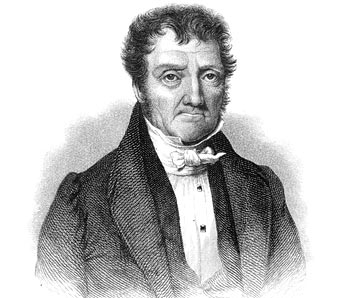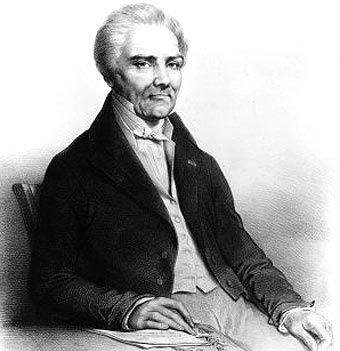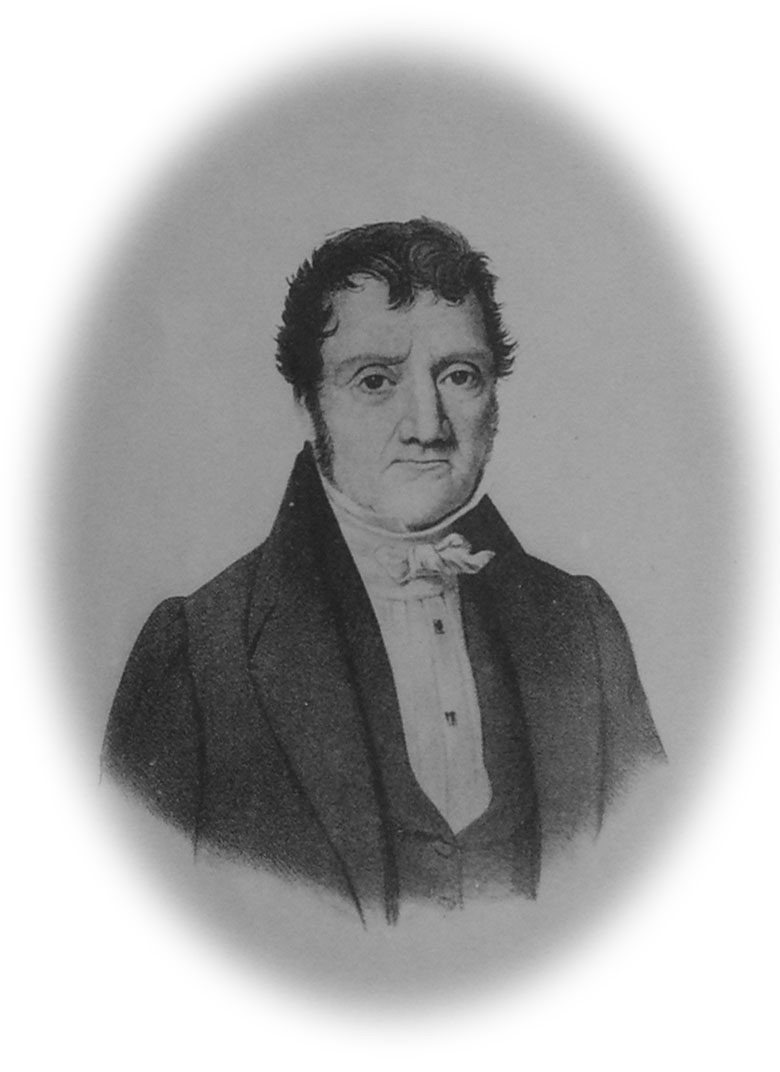Aimé Bonpland
Aimé Jacques Alexandre Bonpland (actually Goujaud, born August 29, 1773 in La Rochelle, France, † May 11, 1858 in Santa Ana (now Bonpland ), Departamento Paso de los Libres, Corrientes Province, Argentina) was a French naturalist. Its official botanical author abbreviation is " Bonpl. ".
Life
Aimé Bonpland was the son of the physician Simon -Jacques Goujaud - Bonpland ( born around 1742) and the Marguerite Olive Goujaud - Bonpland, née de la Coste.
Bonpland made in 1793 as a surgeon on board a frigate, which cruised against the English, a trip in the Atlantic Ocean with, then attended medical school in Paris and toured from 1799 to 1804 with Alexander von Humboldt Spain and America. On this epoch-making for science travel both researchers supported each other. Bonpland collected among other things, more than 60,000 plant specimens, of which about 3,500 species had not been described. Nevertheless, it is in the public perception of the expedition in the shadow of Alexander von Humboldt today.
After his return in August 1804 Bonpland was appointed head of the Imperial Botanical Gardens in Navarre and Malmaison, which he des plantes rares, cultivées à Navarre et à Malmaison (1813, with 64 copper plates ) described in his book Description. At the same time he gave the Plantes équinoxiales recueillies en Mexique (1805-1818, 2 volumes ) and the monograph of mélastomacées ( 1806-1823, 2 volumes, with 120 copper plates ) out. Other parts of the collection Karl Sigismund Kunth edited (1788-1850) in the Nova genera et species plantarum.
The overthrow of Emperor Napoleon shook Bonpland so that he no longer wanted to stay in Europe. With seeds of various plant species in the luggage he embarked in 1816 to Buenos Aires, where he was appointed professor of natural sciences. After its leaders are trying to get rid of Bonpland, he moved to Paraguay in October 1820. There he turned his attention to the Paraguayan ( Mate ) and put in Santa Ana a large plantation on. In the midst of the plantation he established an Indian colony.
Because he feared for his monopoly in the tea trade, was the dictator of Paraguay, José Gaspar Rodríguez de Francia (1766-1840), the planting of 1821 invaded by 800 soldiers and destroy, drive out the Indians and Bonpland caught Asuncion to lead. In vain offered Alexander von Humboldt on everything to free his friend Bonpland. The governments of Brazil and the United Kingdom used for him. It was only on May 12, 1829 Bonpland was released from his imprisonment. After that, he lived in Brazil in a small town south of the mouth of the Rio Piratini near the Luca passport. From there he moved to in 1831 to São Borja, where he had bought a small estate. He moved there a number of crops, especially orange trees, and a flock of Merino sheep.
After he had temporarily planned to return with his collections to Europe, he moved to 1850 to Corrientes, where he owned a farm, which gave him the Paraguayan State for the services he had rendered in the establishment of a museum in the capital. His plans for further publications and an improvement in the medical care of residents and agricultural production, he was unable to perform due to lack of funds. He died in poverty in Santa Ana in the department of Paso de los Libres in the province of Corrientes in the north- eastern Argentina; in the village he had lived since 1853. The town was renamed in his honor in Bonpland.
Honors
In 1857 Bonpland was elected a member of the Scholars Academy Leopoldina.
Ehrentaxa:
- The genus Bonplandia from the plant family of the barrier cabbage family ( Polemoniaceae )
- The orchid Ornithocephalus bonplandi
- The squid Grimalditeuthis bonplandi
Other names in his honor:
- The lunar crater Bonpland
- The Bonpland street in Buenos Aires
- Pico Bonpland, a mountain in the Venezuelan Andes










